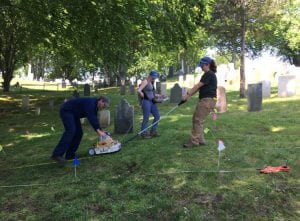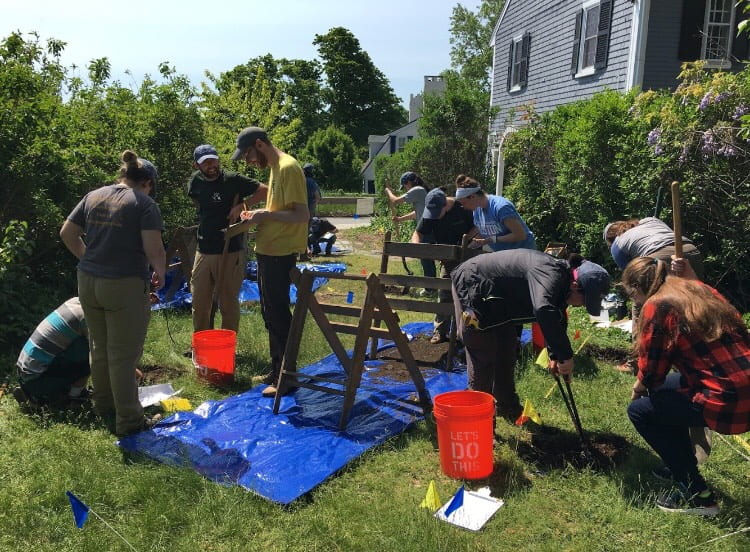By Anya Gruber
Excavations are underway for UMass Boston’s 7th field season in Plymouth, MA! Over the years, UMass’s team has excavated in three areas across the town–Burial Hill, Brewster Gardens, and Cole’s Hill–and this year we’ve added a lot off Carver Street to the list, and have returned to Burial Hill to build off the very exciting discoveries we made last field season.

TA Megan (left) and Mariah, from the Mashpee Wampanoag Tribal Historic Preservation Office, look for artifacts in the screen.
The Carver Street lot is actually two pieces of land; one is owned by Plymouth residents and local history enthusiasts, while the other is owned by the town. This spot is located just down the road from Cole’s Hill, in an area that has a long settlement history. Based on historic maps and records, oral history, and previous excavations at nearby sites, we believe that this may have been inside the eastern edge of the palisaded village established in the 1620s. The Fiske Center’s resident geophysics wizard Dr. John Steinberg, alongside graduate students Melissa and Megan, conducted an extensive GPR (ground penetrating radar) survey to better understand what lies beneath the soil here. The GPR data showed a few anomalies that may belong to a building foundation, or perhaps a stone wall. But we won’t know until we dig a little further!

John, Megan, and Melissa walk the GPR unit on Burial Hill to create maps which inform our excavation plans for the summer.
Once we’re done on Carver Street, we’ll move on to our main site at Burial Hill. This location has seen the majority of UMass’s work in Plymouth, and has yielded incredible insights into the early colonial and Native histories from the deep to the recent past. Last year, we concentrated most of our work on the western side of the crypt, and we will continue that pattern this year. We’re keeping our fingers crossed that we’ll find some more 17th century artifacts and preserved features this summer!

